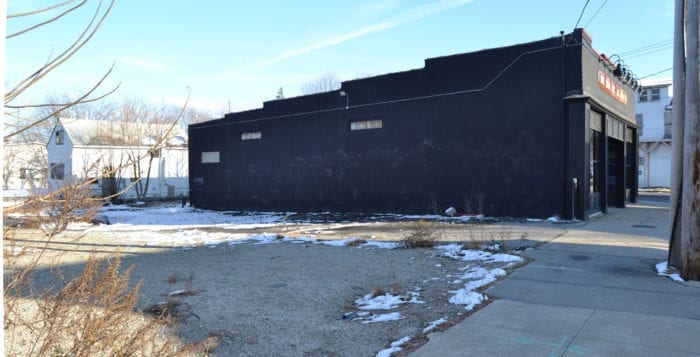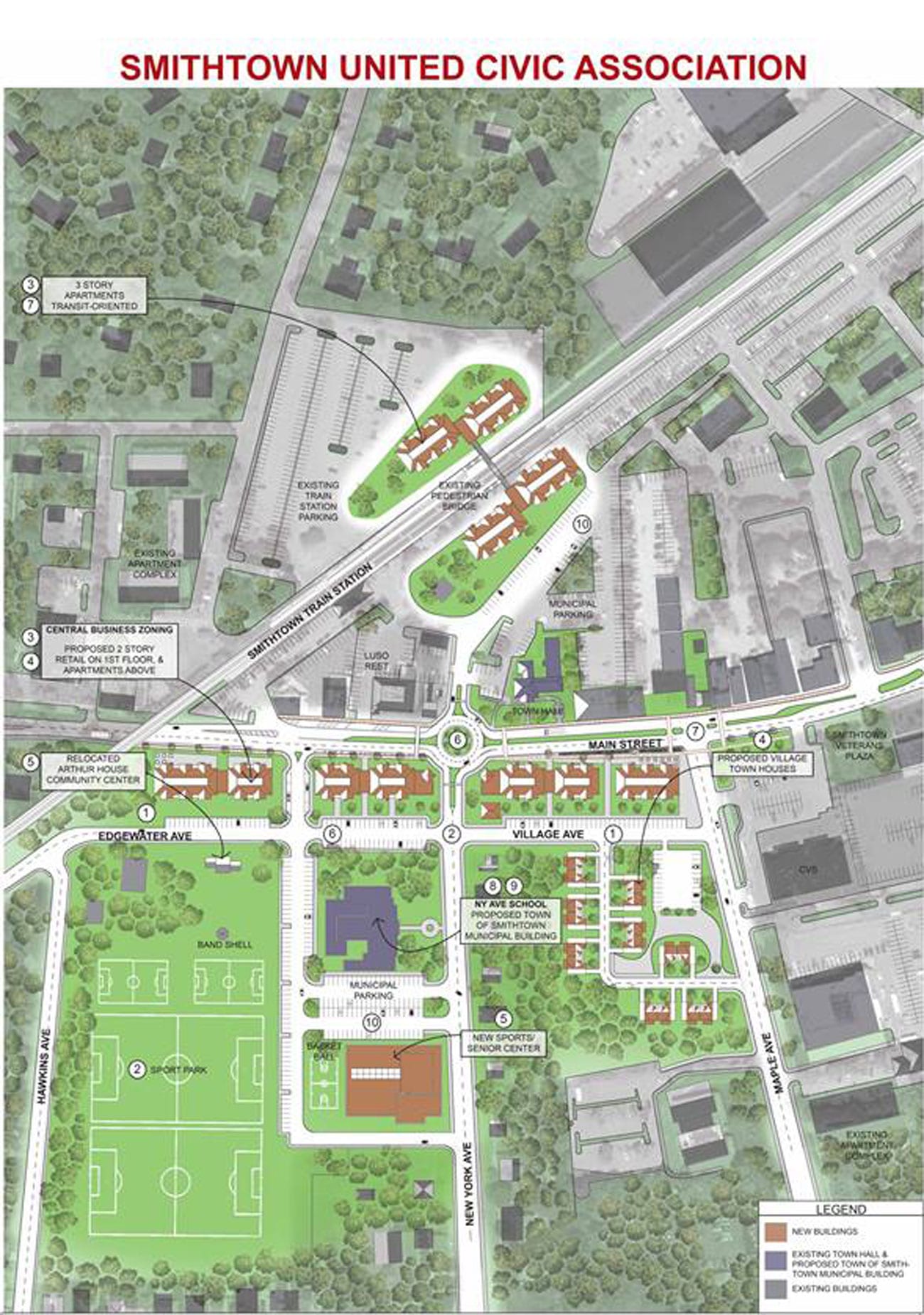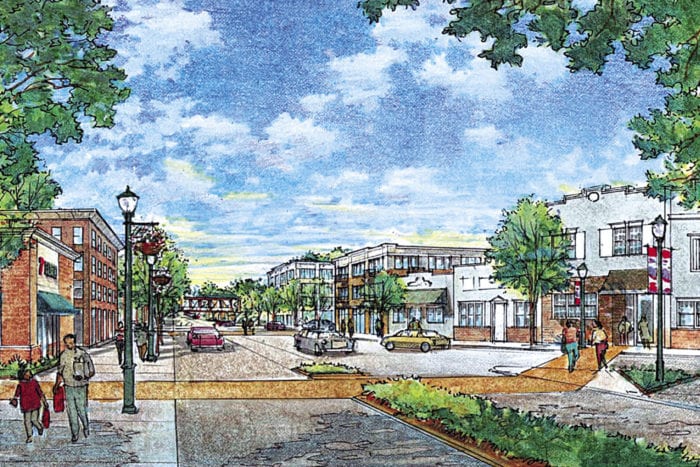Port Jefferson Village Mayor Margot Garant has repeatedly called the use of eminent domain “a tool in the village’s toolbox” in relation to its vision for upper Port Jeff revitalization, and as of last week, it appears the toolbox has been opened.
The village is set to acquire a parcel of land in upper Port using eminent domain, as it is looking to purchase vacant property at 1527 Main St. between Safe Harbor Title Agency and Tara Inn on the east side of Main Street, to then sell it to a developer. A diner used to occupy the space, though it has since been torn down. A public hearing was held on the matter Dec. 4, another requirement prior to proceeding with the acquisition of the land.
The parcel is currently owned by Jose Ramos, who purchased the premises for $260,000 in July 2013 with the hopes of building and operating a bakery, according to his attorney Steven Askinas of a Bay Shore-based law firm. Both men were present for the hearing before the village board. Askinas said Ramos was initially asked by the village to clear the property and start over, and he complied with the request. He was also asked for plans to include a second story with space for apartments, which he also complied with in his plans, so that the building would be adherent to the village’s greater revitalization plans.
In early 2016, Port Jefferson Village began taking tangible steps to improve the look and spur economic development of upper Port, the area of the village on Main Street between North Country Road and the Long Island Rail Road train tracks. A blight study was commissioned in May 2016, a requirement to qualify an area for an urban renewal plan by New York State general municipal law. Because the study concluded the cluster of parcels was indeed a blighted area, an urban renewal plan was adopted in October 2016, clearing the way for the village to impose eminent domain over property owners should an agreement not be reached for the village to purchase the property, or if owners do not comply with the village’s revitalization plans.
Askinas said his client has complied with everything the village asked, and still wants to build his bakery and remains willing to include apartments in his plans. During the hearing, trustee Bruce D’Abramo, who serves as the board’s liaison to the building and planning department, said Ramos never submitted a complete application regarding the property. Ramos has rejected offers to sell the property on the open market and from the village, following the commission of an appraisal of the property by the village, according to Village Attorney Brian Egan.
“The total amount to date that he has invested in this property is $380,000, approximately,” Askinas said. “He wants to put his bakery in. He’ll put apartments up top. If there’s a special design plan that is in keeping with the neighborhood or the neighborhood plan for development, he’s willing to do that. To take the property from somebody who’s willing to put into this area makes very little sense. I’m sure whatever the village is offering my client would not be fair recompense for what he has put in. It’s four years already he’s been trying to get this done. He has been doing whatever the village asked, and now to come back and say ‘see-yah,’ that’s not fair.”
Public comments can be submitted regarding the matter until Jan. 3, and the village concluded the hearing by asking Ramos to submit a completed application for the site within the 30-day period.
The village was awarded a $500,000 grant in February to be used on the area from Empire State Development, the state’s economic development arm, as part of the Restore New York Communities Initiative, which was created to support municipalities in rehabilitating blighted commercial properties. Garant also announced the state selected Port Jeff Village as a recipient for another $350,000 in grant money earmarked for improving the southern gateway to the village near the train tracks. She added the village is in the process of selecting master developers to begin working on the area of upper Port, which she said she expects to begin in early 2018.









